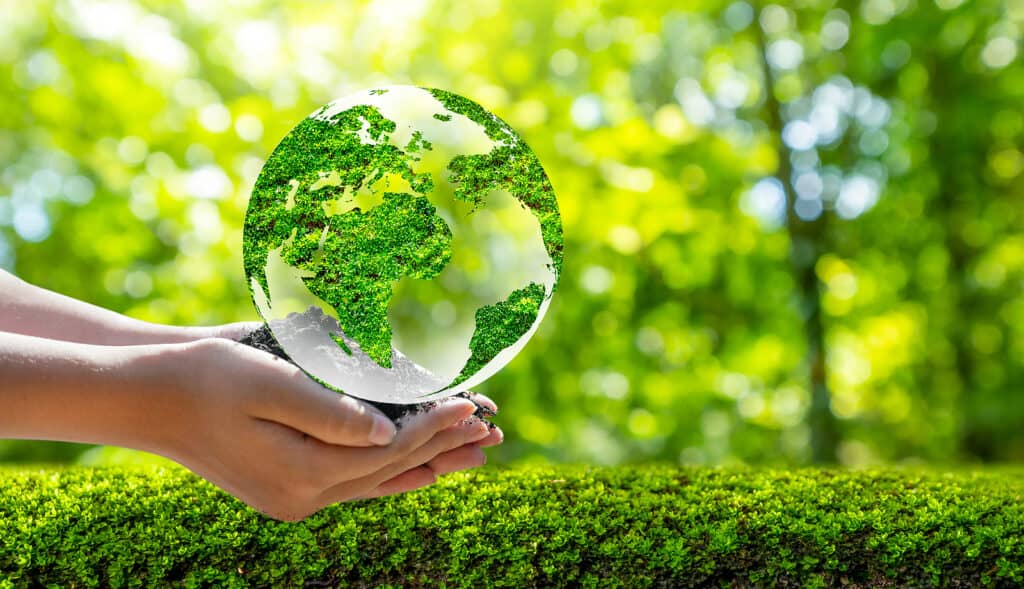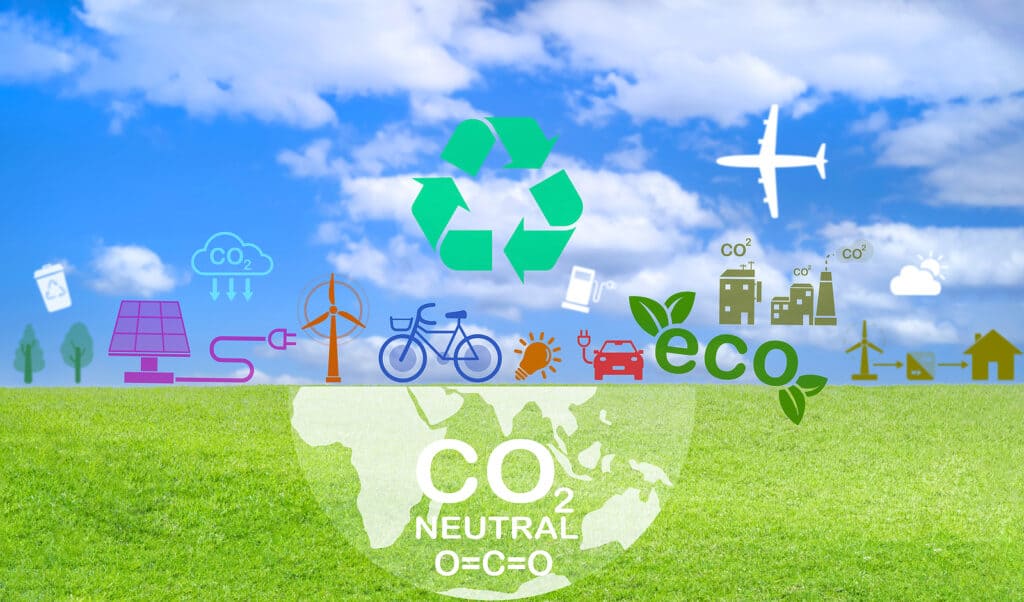Cleaner Energy for a Cleaner World: The Advantages of Hydroelectric Power
The world of renewable energy is a fascinating landscape that has captivated our family's imagination and sparked our academic interest. We are passionate about creating a cleaner world and have been exploring the various possibilities available. Among them, hydroelectric power has emerged as a particularly intriguing option. In this comprehensive blog post, we want to share our insights and discoveries about the far-reaching benefits of hydroelectric power, as we embark on our journey to transition to cleaner energy sources in our daily lives.
Understanding Hydroelectric Power
Hydroelectric power has numerous advantages, making it an essential component of the global energy mix. Firstly, it is a clean and renewable energy source, as it does not emit harmful greenhouse gases during operation. This helps combat climate change and reduce air pollution. Additionally, water is a readily available resource, ensuring a reliable and consistent source of energy.
Hydroelectric power is also highly versatile, capable of generating electricity on both small and large scales. Small-scale hydroelectric systems can be used in remote areas or for individual homes, while large-scale projects, such as the Hoover Dam, can provide electricity to entire regions. This flexibility allows hydroelectric power to meet varying energy demands efficiently.
What is Clean Energy?
Switch to clean energy is crucial in today's world as we strive to mitigate climate change and transition to a sustainable future. Clean energy refers to energy sources that have minimal or no negative impact on the environment. It includes renewable energy sources such as solar, wind, hydroelectric, geothermal, and biomass. Unlike fossil fuels, which release harmful greenhouse gases when burned, clean energy technologies harness natural resources without depleting them or causing pollution. By comprehending clean energy, we can recognize the importance of shifting away from fossil fuels and embracing these renewable alternatives.

Clean Energy Option and Typs
Solar Energy
Solar energy is a remarkable source of clean power that leverages the boundless energy of the sun to generate electricity. The utilization of photovoltaic cells and solar panels has revolutionized our ability to capture sunlight and directly convert it into electrical energy. This sustainable and increasingly cost-effective solution has become a pivotal player in the global clean energy movement. By harnessing the immense power radiated by the sun, solar energy offers an environmentally friendly alternative to traditional fossil fuel-based electricity generation.
Wind Energy
Wind energy is another prominent form of clean energy that capitalizes on the force of the wind to produce electricity. Modern wind turbines employ advanced technology to harness the kinetic energy of the wind and convert it into usable electrical power. This abundant and renewable resource has the capability to generate a substantial amount of electricity while minimizing harmful emissions. As the wind blows across vast landscapes and offshore areas, it presents a sustainable energy solution that can significantly contribute to reducing our reliance on non-renewable energy sources.
Hydroelectric Power
Hydroelectric power is derived from the remarkable energy present in moving water. This clean energy source is typically generated through the construction of dams, which create reservoirs to store water. The potential energy held within the stored water is then harnessed by employing turbines that convert it into mechanical energy. These turbines are interconnected with generators that transform the mechanical energy into electrical power. By capitalizing on the power of water, hydroelectric power plants offer a reliable and sustainable means of electricity generation, with minimal greenhouse gas emissions.
Biomass Energy
Biomass energy entails utilizing organic materials to generate electricity, offering a renewable and eco-friendly energy source. The materials used can range from agricultural waste and residues to wood and purposefully grown energy crops. Although burning biomass releases carbon dioxide, the plants grown for biomass production can absorb an equivalent amount of carbon dioxide through the process of photosynthesis, effectively making the overall process carbon neutral. This renewable energy option helps mitigate reliance on fossil fuels while also managing waste materials and promoting sustainable land use practices.
Geothermal Energy
Geothermal energy taps into the remarkable heat contained within the Earth's crust to generate electricity and provide heating for buildings. By drilling into the Earth's crust, we can access reservoirs of hot water and steam, which can be used to power turbines that generate electricity. This clean energy source capitalizes on the constant geothermal heat emanating from the Earth's core, offering a sustainable and virtually limitless energy supply. Geothermal energy can be harnessed in regions with active volcanic activity or where there are naturally occurring geothermal reservoirs, contributing to a diversified clean energy portfolio and reducing greenhouse gas emissions.
The Importance of Clean Energy
Our current heavy dependence on fossil fuels has had severe consequences, with greenhouse gas emissions reaching alarming levels, contributing to the acceleration of climate change and widespread environmental degradation. The urgent need to transition to clean energy technologies has become increasingly evident. Clean energy sources offer a transformative solution by replacing fossil fuels with renewable alternatives, thereby breaking the cycle of environmental harm and paving the way for a sustainable and cleaner future.
By embracing clean energy, we have the opportunity to address the pressing issue of carbon emissions. Fossil fuel combustion releases significant amounts of carbon dioxide and other greenhouse gases into the atmosphere, trapping heat and exacerbating global warming. The resulting climate change impacts are far-reaching, with rising sea levels, more frequent and intense natural disasters, disrupted ecosystems, and threats to human health and livelihoods.
Renewable energy sources such as solar, wind, hydroelectric, biomass, and geothermal power present a viable path forward. These sources offer immense potential to mitigate greenhouse gas emissions and reduce our carbon footprint. By harnessing the power of the sun, wind, water, organic materials, and the Earth's heat, we can generate electricity and fulfill our energy needs without perpetuating the harmful effects associated with fossil fuel extraction and combustion.
Benefits of Clean Energy
Combatting Climate Change
One of the most profound benefits of clean energy lies in its pivotal role in combatting climate change. By transitioning from fossil fuels to renewable energy sources, we can make a substantial impact in reducing greenhouse gas emissions. Unlike fossil fuels, which release significant amounts of carbon dioxide and other pollutants when burned, renewable energy sources produce minimal to zero emissions during operation. This shift can help mitigate the effects of global warming, limit the rise in global temperatures, and protect the planet for future generations.
Economic Benefits
Clean energy technologies offer a multitude of economic benefits. The transition to renewable energy sources creates new employment opportunities and stimulates economic growth. As the demand for clean energy increases, there is a growing need for skilled workers in various sectors such as solar panel installation, wind turbine manufacturing, and biomass plant operations. These emerging industries can drive job creation and provide long-term, sustainable employment. Moreover, investing in clean energy infrastructure can attract private investments, spur innovation, and enhance competitiveness in the global market.
Energy independence and security are additional economic advantages of clean energy. By reducing our reliance on imported fossil fuels, which are subject to price volatility and geopolitical tensions, we can achieve greater energy independence. Generating energy locally from renewable sources promotes domestic energy production, reduces vulnerability to supply disruptions, and bolsters national energy security. Additionally, renewable energy sources have a virtually limitless supply, unlike finite fossil fuel reserves that are subject to depletion.
Health and Environmental Benefits
Clean energy offers substantial health and environmental benefits compared to traditional energy sources. Fossil fuel combustion releases harmful pollutants into the air, such as sulfur dioxide, nitrogen oxides, particulate matter, and volatile organic compounds. These pollutants contribute to air pollution and pose significant risks to human health, leading to respiratory problems, cardiovascular diseases, and other adverse health effects. By transitioning to clean energy, we can improve air quality and reduce the incidence of pollution-related illnesses, enhancing public health and well-being.
Increased Resilience
Distributed renewable energy systems, such as rooftop solar panels, can enhance energy resilience by reducing dependence on centralized power grids. In the face of natural disasters or grid disruptions, decentralized clean energy systems can continue to provide electricity to communities.
Water Conservation
Many clean energy technologies have lower water consumption compared to traditional fossil fuel-based power plants. For example, solar panels require minimal water for operation, reducing strain on local water resources and promoting water conservation.
Community Empowerment
Clean energy initiatives can empower local communities by providing opportunities for community ownership, cooperative models, and shared benefits. Community-led renewable energy projects foster social cohesion, economic empowerment, and increased engagement in sustainable practices.
Technological Innovation
Investing in clean energy drives technological advancements and innovation. As research and development in renewable energy technologies progresses, we can expect improvements in efficiency, cost-effectiveness, and energy storage capabilities, further accelerating the transition to a sustainable energy future.
Clean Energy Zero Commitments Small effort Big Impact
In the pursuit of a sustainable future, individuals and communities can make significant contributions through energy zero commitments. These commitments involve adopting simple yet impactful changes in our energy consumption and lifestyle choices, ultimately working towards reducing our carbon footprint and promoting a cleaner, greener world. While the task may seem daunting, the truth is that even small efforts can have a substantial impact when embraced collectively.

Alternative Energy Sources for Clean Energy
In the quest for a sustainable and environmentally friendly future, alternative energy sources play a crucial role in meeting our energy needs while minimizing the negative impacts associated with traditional fossil fuel-based power generation. These innovative sources offer diverse and renewable options for clean energy production. Let's explore some prominent alternative energy sources:
Tidal Energy
Tidal energy harnesses the power of ocean tides to generate electricity. As tides rise and fall, tidal turbines or barrages are strategically placed in coastal areas to capture the kinetic energy of the moving water. This renewable energy source provides a predictable and consistent power supply, driven by the gravitational forces between the Earth, Moon, and Sun. Tidal energy projects have the potential to produce significant amounts of electricity and contribute to a sustainable energy mix.
Wave Energy
Wave energy, similar to tidal energy, utilizes the power of the ocean but focuses on capturing the energy from waves. Wave energy converters placed offshore or along coastlines absorb the up-and-down motion of waves, converting it into electricity through various technologies such as oscillating water columns, point absorbers, and attenuators. Wave energy is a promising alternative source with vast potential, especially in regions with strong and consistent wave patterns.
Ocean Thermal Energy Conversion (OTEC)
OTEC utilizes the temperature difference between warm surface water and cold deep ocean water to generate electricity. This process involves a closed-loop system where warm surface water vaporizes a working fluid with a low boiling point, producing steam that drives a turbine. Cold deep ocean water then condenses the vapor, completing the cycle. OTEC has the potential to provide continuous, clean energy, especially in tropical regions with a large temperature gradient between surface and deep ocean waters.
Solar Thermal Energy
Solar thermal energy focuses on harnessing the sun's heat to produce electricity or provide heating for residential and commercial buildings. Concentrated Solar Power (CSP) systems use mirrors or lenses to concentrate sunlight onto a receiver, which then generates high-temperature heat. This heat is used to drive a turbine connected to a generator, producing electricity. Solar thermal energy is a reliable and scalable solution, particularly in regions with abundant sunlight.
Fuel Cells
Fuel cells are devices that convert chemical energy from fuel (such as hydrogen, methanol, or natural gas) into electricity through an electrochemical process. They operate with high efficiency and produce electricity silently, without the combustion of the fuel, resulting in low emissions. Fuel cells can power a wide range of applications, from portable devices to vehicles, and even provide backup power for buildings.
Frequently Asked Questions About Clean Energy
How do you make cleaner energy?
Making cleaner energy involves adopting sustainable practices and utilizing renewable energy sources to reduce carbon emissions and minimize environmental impact. This can be achieved through various means, such as transitioning from fossil fuel-based power generation to solar, wind, hydroelectric, or geothermal energy, implementing energy efficiency measures, promoting energy conservation, and investing in technologies like energy storage and smart grids.
How much more expensive is CleanChoice Energy?
The cost of CleanChoice Energy can vary depending on factors such as the specific plan chosen, location, energy consumption, and market conditions. While renewable energy sources were historically more expensive than traditional fossil fuel-based energy, the cost of clean energy has significantly decreased in recent years due to technological advancements, economies of scale, and supportive policies. However, it is important to note that pricing structures and plans offered by CleanChoice Energy may vary, and it is advisable to consult their official website or contact them directly for detailed pricing information.
What does cleaner energy mean?
Cleaner energy refers to energy sources and technologies that have a reduced environmental impact compared to traditional fossil fuel-based energy generation. It involves utilizing renewable energy sources that produce little to no greenhouse gas emissions during operation, minimizing air and water pollution, and mitigating the adverse effects of climate change. Cleaner energy sources are sustainable, and renewable, and offer a more environmentally friendly alternative to conventional energy sources.
What is perfect clean energy?
Perfect clean energy refers to an ideal scenario where energy is generated and consumed with zero negative environmental impacts. It encompasses using energy sources that are completely renewable, producing no greenhouse gas emissions or pollutants, and having no detrimental effects on ecosystems or natural resources. While achieving perfect clean energy may be challenging, ongoing advancements in technology, policy support, and collective efforts toward sustainability can bring us closer to this vision of a truly clean and sustainable energy future.
Clean choice energy Wikipedia?
CleanChoice Energy is a renewable energy company that offers customers the option to power their homes or businesses with 100% clean, renewable energy. While CleanChoice Energy's services and offerings are not specifically described on Wikipedia, you can visit their official website or refer to reputable sources for more detailed information about their products, pricing, and operations.
Conclusion
In conclusion, the transition to cleaner energy sources is essential for creating a sustainable and cleaner world. Hydroelectric power, along with other renewable energy sources such as solar, wind, biomass, and geothermal power, offers numerous advantages. Hydroelectric power is clean, renewable, and versatile, capable of generating electricity on both small and large scales. By harnessing the power of moving water, hydroelectric power plants provide a reliable and sustainable means of electricity generation with minimal greenhouse gas emissions.
The importance of clean energy cannot be overstated. Our heavy reliance on fossil fuels has led to severe consequences, including greenhouse gas emissions, climate change, and environmental degradation. Clean energy sources present a transformative solution by replacing fossil fuels and reducing our carbon footprint. They combat climate change, stimulate economic growth, enhance energy independence and security, improve public health and air quality, and promote technological innovation.
Sources
https://elenger.lt/en/elenger-clean-energy-for-a-cleaner-world/

